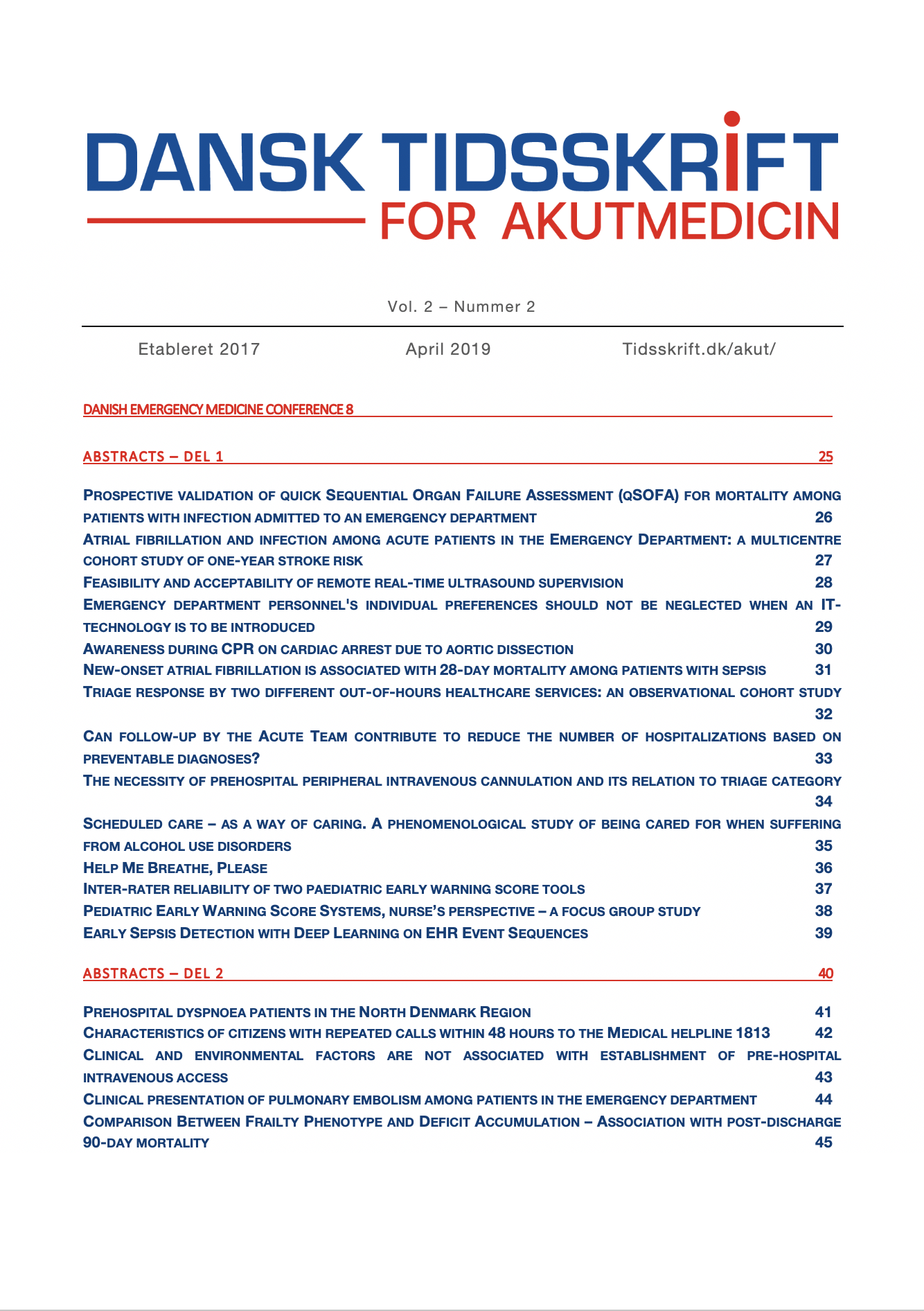Resumé
Background: In 2017, 2523 patients above the age of 64 were admitted from the community of Aabenraa to the Emergency Department (ED). Around 54% of them discharged from the ED within 48 hours. The aim of the CoLab project is to explore the information barriers in the transition of elder patients between primary health care (PHC) and the ED and back. Furthermore, to investigate whether a standardized communication tool combined with video communication technology improves the cross-sectoral communication and collaboration between nurses in the ED and PHC.
Methods: This was an exploratory and qualitative study. Data was generated from semi-structured group interviews with seven PHC nurses and two ED nurses. The standardized communication tool was developed from both a similar tool constructed by the Danish society for patient safety: ISBAR MED SALSA and the results from the interviews. Video communication via iPad was used between the acute care nurses in PHC and ED and a stationary video communication tool was installed between the ED and the two call centers in PHC.
Results: The interim analysis of the study so far suggests that is it not possible to establish a scheduled time for communication between ED and the PHC because of the established fast track patient pathways. Using a communication tool as guide for information sharing led to a higher quality exchange of information between PHC and ED. Both the PHC and ED nurses saw improvement in exchanging information by combining the standardized communication tool with video conferencing. This has raised the understanding of each other’s work areas and the need for sharing information about the transition of the elder patients between the PHC and ED.
Conclusion: The project is still in progress. However, the midterm analysis has shown evidence that a standardized communication tool combined with video communication would improve the quality of cross-sectoral communication and collaboration between nurses in the ED and PHC. We believe that communication barriers should be reduced or eliminated in order to improve cross-sectoral collaboration and the continuity of care for the elder patient during the transition between PHC and ED.
Licenseret under en Creative Commons Kreditering 4.0 International-licens (CC BY 4.0).
© Forfatterne.


